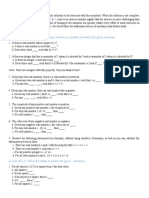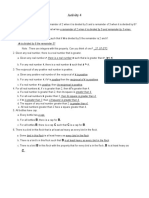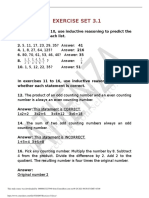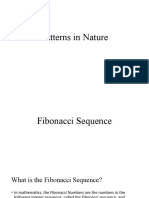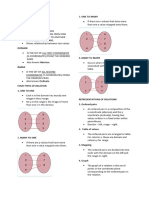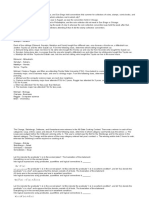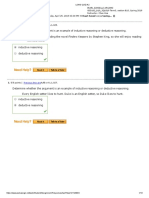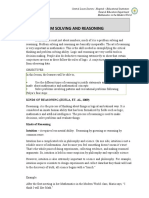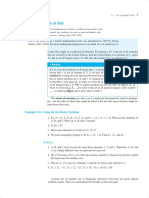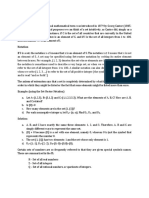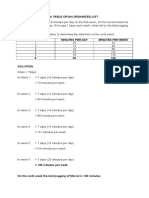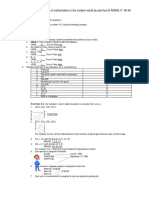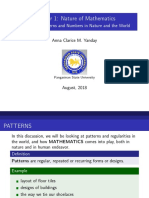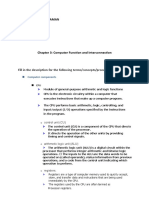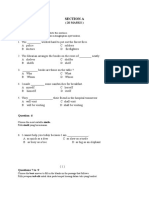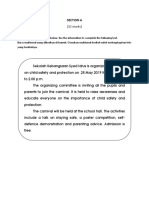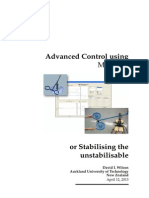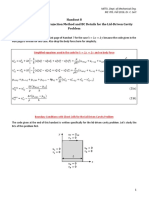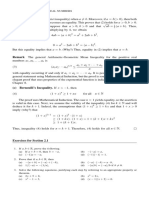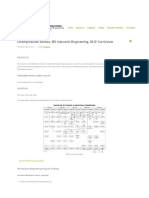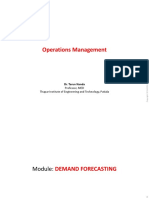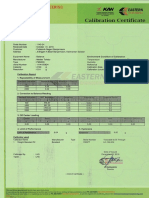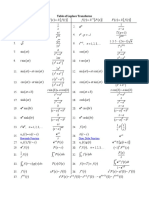CSF3001 - Discrete Structure
Dr. Farizah Yunus (K1)
Dr. Wan Nural Jawahir Hj Wan Yussof (K2)
Assoc. Prof. Ts. Dr. Noraida Hj Ali (K3) Dr.
Ashanira Mat Deris (K4)
October 11, 2020
GROUP 15
• SITI MAISARAH BT AB KHALIL (S58559)
• VIMITRA RAMAN (S59466)
• NUR IMAN BATRISYIA BT AHMAD FAIRUZY (S60162)
1 Exercise 1
1.1 Variables
1. The cube root of any negative real number is negative.
(a) Given any negative real number s, the cube root of negative number .
(b) For any real number s, if s is negative , then the cube root is negative . (c) If a
real number s is negative then the cube root is negative .
2. For all equations E, if E is quadratic then E has at most two real solutions.
(a) All quadratic equations has at most two real solutions .
(b) Every quadratic equation has at most two real solutions .
(c) If an equation is quadratic, then it has at most two real solutions .
(d) If E is quadratic , then E has at most two real solutions .
(e) For all quadratic equations E, E has at most two real solutions .
1.2 The Language of Sets
1. For each integer n, let Tn = {n, n2}. How many elements are in each of T2, T−3, T1 and T0? Justify your
answers.
1
� SOLUTIONS
Tn = {n , n2}
T2 = {2 , 22} = {2 , 4} = 2 ELEMENTS
T−3 = {-3 , -32} = {-3 , 9} = 2 ELEMENTS
T1 = {1 , 12} = {1} = 1 ELEMENT
T0 = {0 , 02} = {0} = 1 ELEMENT
2. (a) Is 3 ∈ {1, 2, 3}? (b) Is 1 ⊆ {1}?
(c) Is {2} ∈ {1, 2}?
(d) Is {3} ∈ {1, {2}, {3}}? (e) Is 1 ∈ {1}?
(f) Is {2} ⊆ {1, {2}, {3}}?
(g) Is {1} ⊆ {1, 2}?
(h) Is {1} ∈ {{1}, 2}?
(i) Is {1} ⊆ {1, {2}}?
(j) Is {1} ⊆ {1}?
SOLUTION
a) TRUE
b) FALSE
c) FALSE
d) TRUE
e) TRUE
f) FALSE
g) TRUE
h) FALSE
i) TRUE
j) TRUE
3. Let S = {2, 4, 6} and T = {1, 3, 5}. Use the set-roster notation to write each of the following sets, indicate
the number of elements that are in each set:
(a) S × T
2
� (b) T × S
(c) S × S
(d) T × T
SOLUTION
A) { (2,1), (2,3), (2,5), (4,1), (4,3), (4,5),(6,1), (6,3), (6,5)} ; 9 ELEMENTS
B) {(1,2), (1,4), (1,6), (3,2), (3,4), (3,6), (5,2), (5,4), (5,6)} ; 9 ELEMENTS
C) {(2,2), (2,4), (2,6), (4,2), (4,4), (4,6), (6,2), (6,4), (6,6)} ; 9 ELEMENTS
3
�1.3 The Language of Relations and Functions
1. Define a relation S from R to R as follows:
For all (x, y) ∈ R × R, (x, y) ∈ S means that x ≥ y.
(a) Is (2, 1) ∈ S? Is (2, 2) ∈ S? Is 2 S 3? Is (1) S (2)?
(b) Draw the graph of S in the Cartesian plane.
Solution:
a) (2, 1) ∈ S , true because 2 ≥ 1
(2, 2) ∈ S, true because 2 ≥ 2
2 S 3, true because 2 ≱ 3
(1) S (2), true because 1 ≱ 2
b) x (1,2,3) , y (0,1,2,3)
{(1,0) , (1,1) , (1,2) , (1,3)
(2,0) , (2,1) , (2,2) , (2,3)
(3,0) , (3,1) , (3,2) , (3,3)}
S={(1,0) , (1,1) , (2,0) , (2,1) , (2,2) , (3,0) , (3,1) , (3,2) , (3,3)}
S= x ≥ y
4
�2. Define a relation T from R to R as follows:
For all real numbers x and y, (x, y) ∈ T means that y2 − x2 = 1. Is T
is a function? Explain.
For y2 − x2 = 1, T is not a function because of ordered pairs in T have
the same first element which is T = {{x,√(x²+1)},{x,√(x²+1)}}.
3. Let X = {2, 4, 5} and Y = {1, 2, 4, 6}. Which of the following arrow diagrams determine functions from
X to Y ?
1
( a)
2 2
4 4
5 6
1
(b)
2 2
4 4
5 6
(c) 1
2 2
4 4
5 6
5
� 1
(d)
2 2
4 4
5 6
(e)
1
2 2
4 4
5 6
Solution:
a) No, it is not a function.
b) Yes, it is a function.
c) No, it is not a function.
d) Yes, it is a function.
e) Yes, it is a function.
